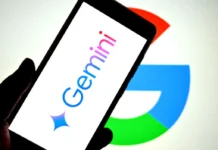Quantum computing has consistently pushed the boundaries of what’s possible in technology, and Google’s latest achievement, the Willow Chip, represents a monumental leap forward. With its 105 qubits, this chip introduces advanced capabilities that promise to solve computational problems in minutes—problems that would take even the fastest supercomputers billions of years. Let’s explore the technology behind this breakthrough and its implications for the future.
What Makes the Willow Chip Unique?
The Willow Chip is designed to overcome one of the most significant challenges in quantum computing: quantum noise. Quantum noise can cause errors in calculations, especially as the number of qubits increases. By employing innovative error-correction techniques, the Willow Chip minimizes these errors, enabling more accurate and reliable computations.
Quantum Noise and Error Correction
Quantum noise refers to the disturbances that affect qubits, leading to errors in their calculations. These disturbances can stem from temperature fluctuations or environmental interferences. The Willow Chip’s design effectively handles this noise by using a grid-based structure—starting with a 3×3 grid of qubits, then scaling to 5×5 and 7×7—to reduce error rates. This innovation, known as quantum error correction, ensures stability and precision.
Key Advantages of the Willow Chip
Speed and Efficiency
In a recent demonstration, the Willow Chip solved a complex calculation in under five minutes. To put this into perspective, the same calculation would take the Frontier supercomputer—the fastest classical supercomputer—approximately 10 septillion years, an unimaginable timeframe vastly exceeding the age of the universe.
Enhanced Qubit Stability
The Willow Chip has significantly improved qubit stability, with T1 times (the duration qubits remain excited) reaching up to 100 microseconds. This marks a fivefold improvement over previous generations, enabling longer and more reliable quantum operations.
Benchmark Performance
Google tested the Willow Chip using the Random Circuit Sampling (RCS) benchmark, a rigorous test designed to evaluate the computational power of quantum processors. The Willow Chip excelled, showcasing its superior performance compared to earlier models.
Applications and Future Potential
The implications of the Willow Chip extend far beyond theoretical calculations. Here are a few areas where it could have a transformative impact:
Scientific Research
Quantum computing can revolutionize fields such as material science, chemistry, and physics by simulating complex molecular structures and reactions at unprecedented speeds.
Cryptography
With its immense computational power, the Willow Chip could decrypt data encrypted using traditional methods, pushing the need for more secure quantum-resistant cryptographic protocols.
Artificial Intelligence
Quantum computers could accelerate machine learning algorithms, enabling AI systems to process and analyze vast datasets more efficiently.
Challenges and the Road Ahead
Despite its groundbreaking capabilities, the Willow Chip is still in its experimental phase and not yet ready for widespread use. Further refinements are needed to optimize its performance for real-world applications. Additionally, building a scalable quantum ecosystem remains a significant challenge.
Conclusion
Google’s Willow Chip represents a significant milestone in quantum computing. By addressing critical challenges like quantum noise and enhancing qubit stability, it brings us closer to the era of practical quantum computers. As research continues, the potential applications in science, technology, and industry are limitless.
For more insights on quantum computing advancements, visit Google AI Quantum. Stay updated with the latest tech breakthroughs by following Imran.xyz.











